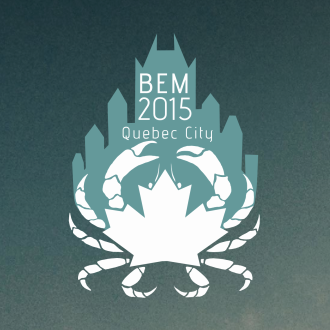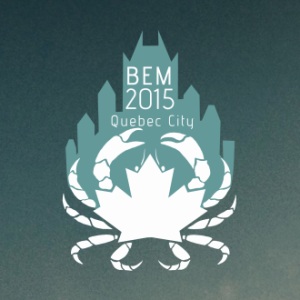Conference attendance can really impact your development as a Ph.D. student and give you great ideas for future collaboration and research. In March, I was lucky enough to attend the 2015 Benthic Ecology Meeting (or Benthics) in Quebec City, Canada. The Benthics meeting focuses on the ecology of the bottom layer of water systems, and this conference is mainly marine in focus. There were lots of great talks, one epic toboggan race, and nearly unlimited opportunities for networking and discussion. A quick overview of my three favourite talks is below. Check out what you missed and hope to see you in Maine next year!
1. “Measuring non-additive selection from multiple species interactions” by Dr. Casey terHorst. Dr. terHorst’s non-marine talk focused on a method for determining whether selection is occurring by examining traits present when multiple species interact. His talk highlighted the relative ease of using the analysis he developed, as well as the exciting outcomes of one particular study. If you have trait response data from a study with multiple species interactions, you may be able to utilize his analysis as well to see if non-additive selection is occurring. The analysis is detailed here and you can check out his website on ecology and evolution here.
2. “Is a warmer world a sicker world? Temperature effects on host-parasite dynamics” by Jennafer C. Malek. Jennafer’s presentation was easily my favorite of the parasitology-themed talks at this year’s conference. She utilized a very straightforward study design to examine whether oysters or their parasites would die off first at elevated temperature. The oysters are often exposed to the air at low tide, and at temperatures consistent with climate change predictions it seems that parasites die off before the oysters do. The dynamics of this relationship have interesting consequences and may provide a level of resilience for oysters in a changing world. Her study is a prime example of the use of a simple experimental design to answer big ecological questions.
3. “Potential larval connectivity of deep-sea methane seep invertebrates in the Intra-American Sea” by Doreen McVeigh. Sometimes a talk blows your mind and shifts your worldview and this was one of those talks. Based on modelling work on larval transport in the Gulf of Mexico and the East Coast, Doreen demonstrated that frequently assumed transport routes may not be the actual transport pathways many species travel. Her models were fascinating and potentially revolutionary, plus she explained them in a way that almost everyone could understand. You can check her out on twitter here.
A huge thanks to the Voss, O’Connor, Burkepile, URI, Fish lab, and UNC groups for making the conference such a blast and live-tweeting the sessions. You can check out the official twitter for some discussion on the conference and some fun photos below.
Author: Maureen Williams, william2[at]tcd.ie
Photo credit: http://www.bemsociety.org/


